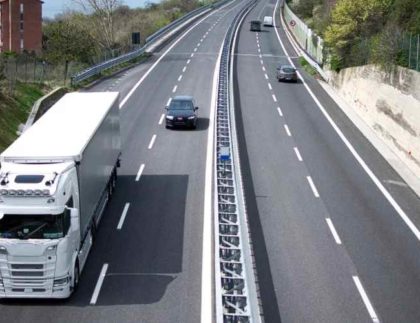

Considering the revolution in the TSL industry caused by the regulations of the Mobility Package that were introduced in the previous year, 2023 seems to be more peaceful. Unfortunately, this does not mean that carriers are not facing new challenges – one of them is a potential increase of individual foreign remunerations, a factor that still needs to be taken into account by the transportation companies owners. Due to high inflation, until very recently, we have been observing an increase in salaries in Europe at a level unprecedented for many years – what are the coming months going to look like in this area?
How to calculate the remuneration of an international driver in accordance with the current laws? What is the basis of the salary? You can read about all of this below – enjoy!
What does the remuneration structure for an international driver currently look like?
Regardless of the type of realized carriages (national or international transport), the remuneration structure of the driver is composed of a part set forth in the regulations of the country of headquarters and the other part – sectoral remunerations. Variable salary elements are most often:
- nighttime work,
- overtime hours.
What else is included in the driver’s earnings? These are, among other things, bonuses for work abroad in the amount consistent with the components applicable in the countries to which the driver was posted. The amount of compensation stems from the subsidy for the sectoral rate applicable in each country, including possible bonuses.
How will the rate for an international driver change in 2023?
While discussing the earnings of an international driver, it is worth to pay particular attention to the rates of minimum salary in individual European countries. High inflation is, of course, the reason behind the marked increase in those indicators. Now we can see its gradual decline, so we can predict a simultaneous slowdown in the growth rate of both pre-established minimum rates and market-determined earnings of the drivers.
It also needs to be stressed that the provisions on posting and sectoral salary are applicable for drivers who carry out cross-trade and cabotage carriages. In bilateral transport, there are no pre-established requirements on the level of remunerations, thus the salary does not have to be adjusted to foreign remunerations.
An example of dynamic changes taking place over the last year is the case of salary rate in Germany. Within a few months, from June to October 2022, it changed from EUR 9.82 to EUR 12.00 per one working hour, which constitutes an increase of over 20%. Just for comparison, increases in recent years did not exceed a few percent. Similar trends can be observed in other European countries. The salary increases have already been announced, among others, in France (EUR 11.27), Austria (change in the rates in the collective agreement for the transport of goods), the Netherlands, Norway and Hungary.
Faced with such changes, you should stay up-to-date and regularly verify the data sourced from the countries where your driver works. The software provided by Inelo contains information published in the official guidelines that are applicable in individual countries, thus when settling the working time of a posted driver, we can be sure that the applied rate is correct.
What is the salary base of an international driver?
Drivers’ salaries are continuously growing; high inflation is the most important reason here, but not the only one. Another significant factor is the shortage of drivers, which, for years, has been one of the greatest challenges in the industry.
The basic salary of an international driver is very often determined by a monthly rate, the amount of which is similar to the minimum wages applicable in a given country. However, this rate is increased to the amount of salary which is currently applicable in the countries of the driver’s cross-trade and cabotage carriages.
In practice, transportation companies are increasingly using bonus systems, which constitute a convenient way to meet the sectoral wage requirements and to settle the salary agreed with the driver.
Tachoscan – The Foreign Remuneration module
The Foreign Remuneration module, which is part of the Tachoscan software, is a real support in the terms of the challenges concerning the mobility package regulations. Based on the data regarding crossed borders, which can be found in the tachograph and on the driver’s card, our software automatically identifies the types of sections that are subject to the rules related to above-mentioned foreign remuneration (cross-trade and cabotage) and sections that are excluded from the regulations (transit, bilateral transport). This allows to limit human errors and obtain correct calculation of rates for working in the territory of a particular country. The module creates the records of working time and reports required by control authorities, it also allows to create new foreign remuneration elements independently.









